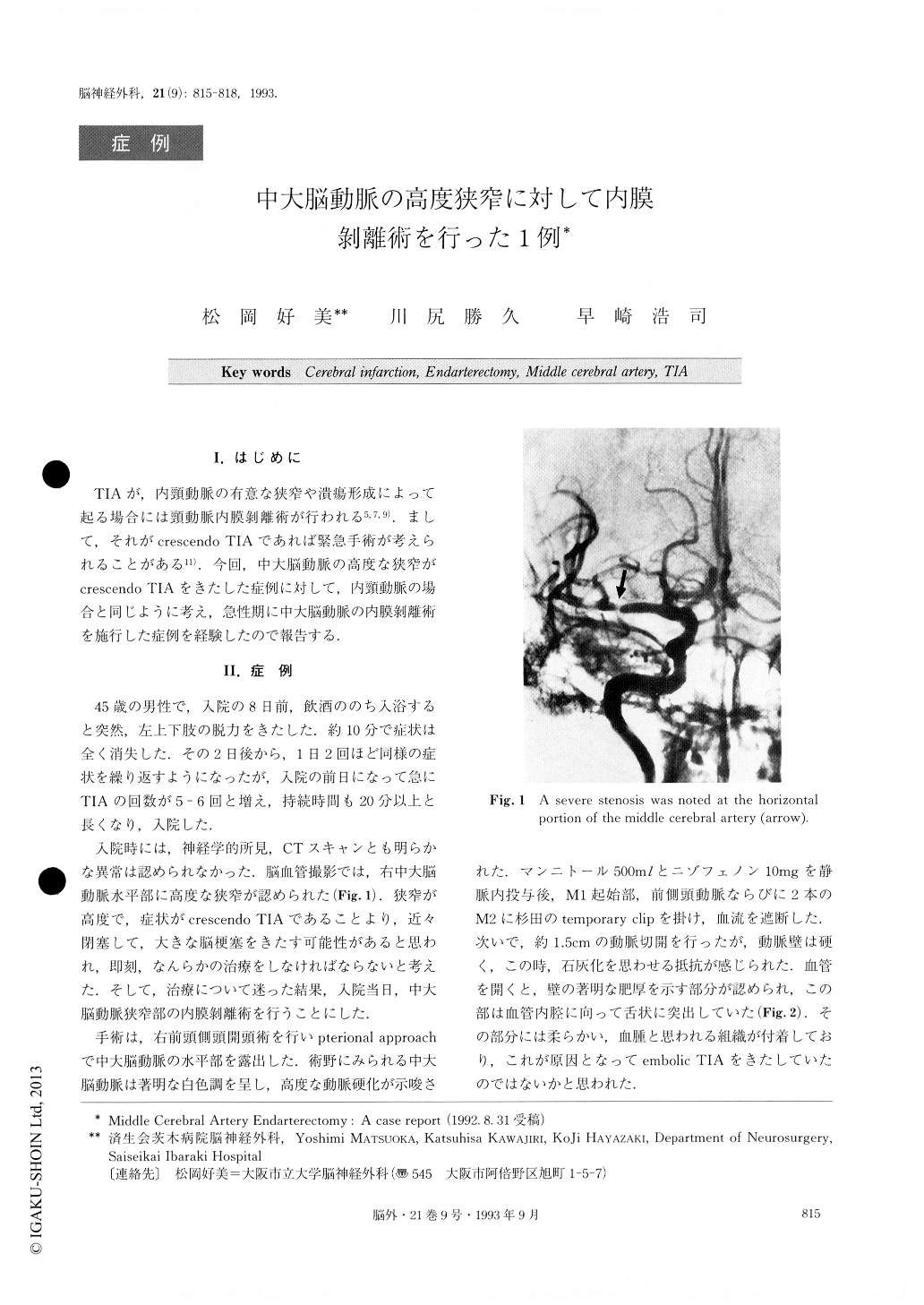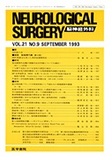Japanese
English
- 有料閲覧
- Abstract 文献概要
- 1ページ目 Look Inside
I.はじめに
TIAが,内頸動脈の有意な狭窄や潰瘍形成によって起る場合には頸動脈内膜剥離術が行われる5,7,9).まして,それがcrescendo TIAであれば緊急手術が考えられることがある11).今回,中大脳動脈の高度な狭窄がcrescendo TIAをきたした症例に対して,内頸動脈の場合と同じように考え,急性期に中大脳動脈の内膜剥離術を施行した症例を経験したので報告する.
This is a report of an endarterectomy performed upon the horizontal portion of the middle cerebral artery of a 45 year-old male patient. He had been suffering from TIAs (left hemiparesis) since 8 days prior to admission. Since the frequency of TIA episodes had increased from 2 times to 5 or 6 times a day and the episodes lasted from approximately 10 minutes to over 20 minutes on the day before admission, the TIA was considered to be of the crescendo type. On admission, neurological examination and CT scans showed no abnormalities. An angiography revealed a severe stenosis of the horizontal portion (MI) of the right middle cerebral artery.
An endarterectomy was performed using a pterional approach on the day of admission because of the crescendo TIA. Heparin was not used during the surgery. The patient showed left hemiplegia after the endarterectomy. Angiography was performed immediately after the surgery, and severe stenosis caused by mural thrombus was found at the operative site. An emergency STA-MCA anastomosis was carried out to prevent cerebral infarction. However, left hemiplegia did not abate, and a CT scan taken a few days after the surgery revealed a low density area which included the right, basal ganglia and internal capsule.
Two weeks after the surgery, angiography was again performed to determine the patency of the anastomosis, which showed normal configuration of the MI, indicating that the stenosis had disappeared. It was considered that if heparin had been used during the endarterectomy, the acute mural thrombus formation at the MI would have been prevented, and neurological deficit would not have appeared.

Copyright © 1993, Igaku-Shoin Ltd. All rights reserved.


